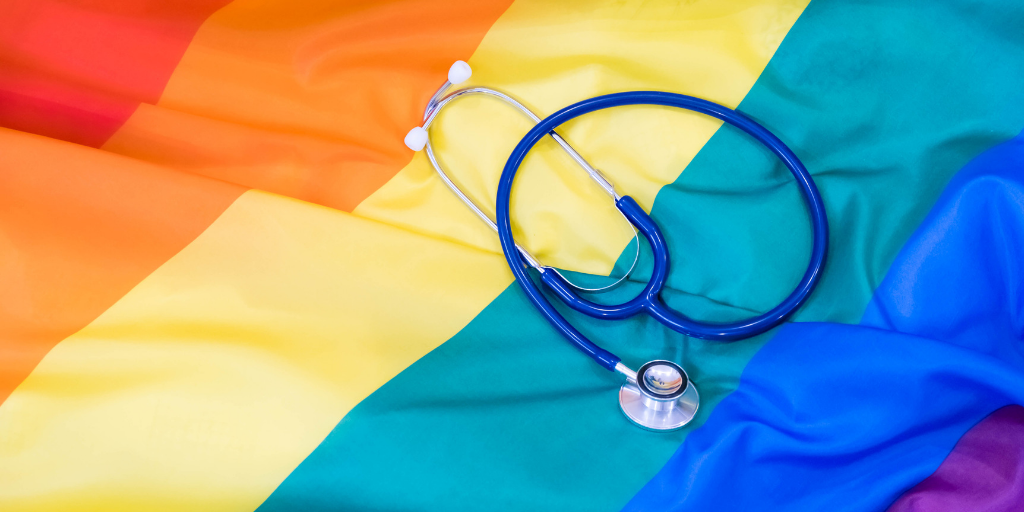On episode 18 of The Break Room podcast, we talk with Douglas J. Ward, MD, in honor of National LBGTQ Pride Month. We discussed ways in which providers can improve their inclusivity and create a practice that is a safe space for LGBTQ patients.
Why We Celebrate Pride
Recent data from a CAP survey shows LGBTQ patients still “experience discrimination in healthcare settings” that “discourages them from seeking care.” Eight percent of LGBQ people and 29 percent of transgender people responded that a doctor or healthcare provider refused to see them due to their actual or perceived sexual orientation or gender identity.
The statistics extend into social determinants of health, too.
- 42 percent of LGBTQ people report living in an unwelcoming environment
- 80 percent of gay and lesbian youth report severe social isolation
- 40 percent of homeless youth are LGBTQ
There is some good news: 92 percent of LGBTQ adults said they believe society has become more accepting of them over the last 10 years. Still, that is a measure of progress, not overall equality. However, providers are uniquely positioned to address these challenges and find solutions that contribute to a happier, healthier, more equal society.
Challenges
Researchers have found that those who identify as LGBTQ+, roughly four percent of the population, are at a higher risk for a number of health issues. According to the National Institutes of Health (NIH), these conditions include “substance use, sexually transmitted diseases (STDs), cancers, cardiovascular diseases, obesity, bullying, isolation, rejection, anxiety, depression, and suicide.”
As noted before, many of these conditions are due to “poor quality of care” because of “stigma, lack of healthcare providers’ awareness, and insensitivity to the unique needs of this community.”
How Can Providers Help?
There are many steps a provider can take. First and foremost is to create an inclusive, welcoming environment for all patients. The American Medical Association recommends that providers list their practices on the Gay and Lesbian Medical Association (GLMA) directory.
Another step providers can take is to customize patient intake forms to include questions about gender identity and sexual practices. As Dr. Ward noted in the podcast, asking these questions via an intake form can avoid an awkward conversation that patients may be unwilling to have face-to-face.
Communication is another important factor. Researchers from NIH suggest providers offer “nurturing, open communication … in a respectful and nonjudgmental manner.” Communication is an ongoing, emerging process. As efforts such as Queer the Census aim to gain more accurate data about the LGBTQ population’s health, providers must stay engaged and up-to-date. For example, a leading task force recently recommended at-risk populations take a daily HIV-prevention pill.
Finally, educate patients about the risks and challenges they face. This could include practicing safe sex, combating social isolation, and learning about community resources, such as LGBTQ-friendly Alcoholics Anonymous classes for substance abuse or peer-support groups for mental illness. These educational resources can help maintain health in between office visits and encourage patient engagement.
With these minor tweaks, providers can create a safer environment for LGBTQ patients. Can you think of any other ways providers can foster a more inclusive practice? Let us know in the comments!










Related Articles
How to Keep Your Patients From Skipping Mammograms
Kristin Schraa, MD, with Virginia Women’s Center shares how women’s health providers can encourage patients ...
3 Ways Healthcare Can Integrate Behavioral Health and Primary Care
Integrating behavioral health with primary care can lead to better patient outcomes — but how ...
How Can Physicians Support Postpartum Mental Health?
On average, 13 percent of mothers in the United States will develop symptoms of postpartum ...
Engaging Patients in Annual Mammograms
Studies show that a little over 66 percent of women aged 40 and older get ...
What Do Medicare-Aged Patients Want in Their Healthcare?
Within the next 20 years, 20 percent of Americans will be 65 or older. It ...
How Health Systems Grow Stronger With Privia Health
Discover how we helped Health First upgrade technology, align physicians, and accelerate toward value-based care. ...